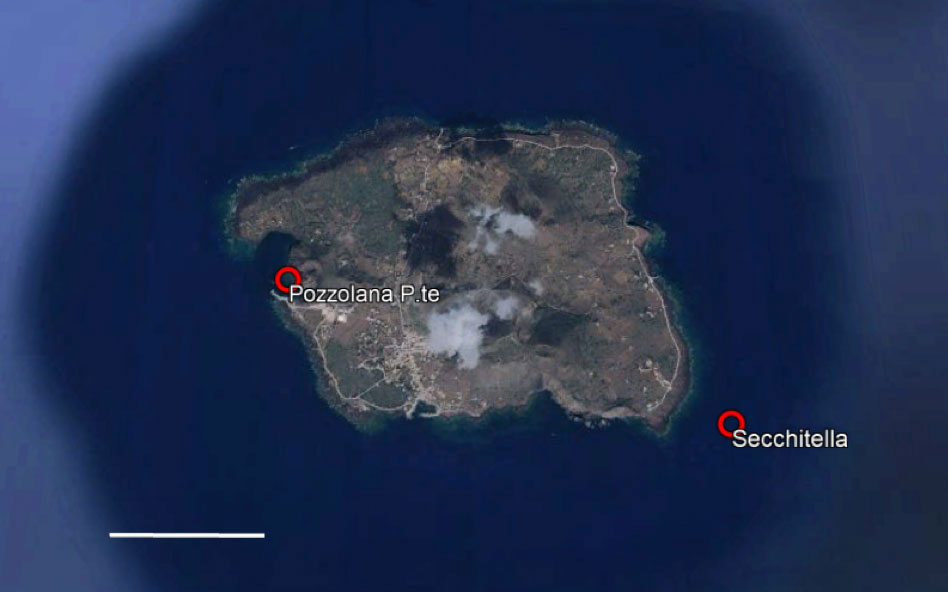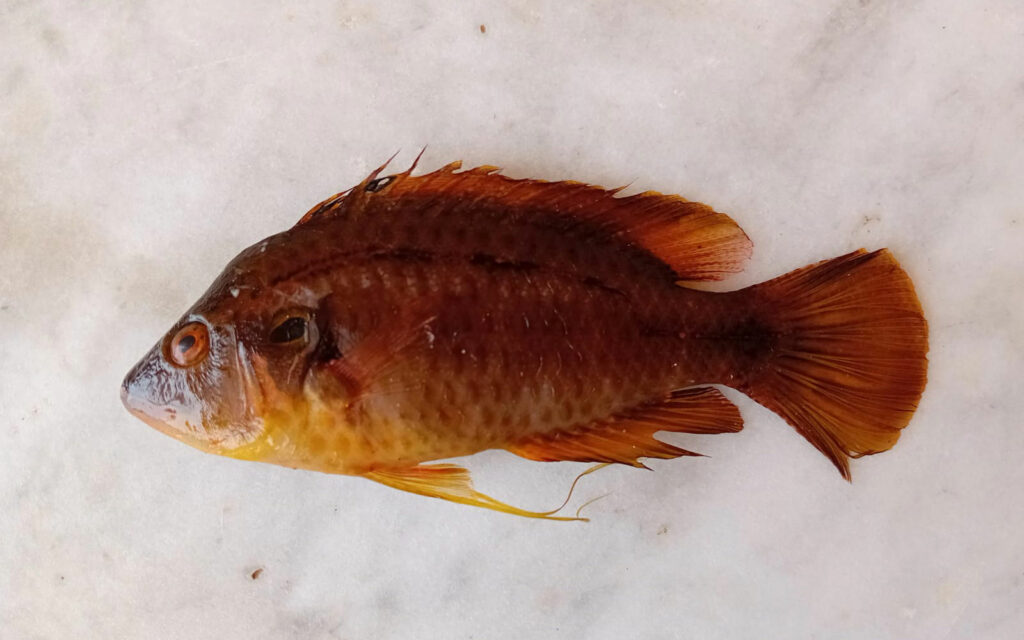The marbled wrasse (Pteragogus trispilus), a Lessepsian migrant from the Red Sea, has been recorded for the third time in Italian waters, with new observations around Linosa (Pelagie Islands).
This finding provides further evidence of the ongoing tropicalization of the Mediterranean and the ecological shifts driven by climate change.
A third confirmed sighting in Italy
A new sighting of the marbled wrasse (Pteragogus trispilus), a non-native species originally from the Red Sea, has been documented in Italian waters. This observation, made around Linosa (Pelagie Archipelago, central Mediterranean), represents the third confirmed sighting of the species in Italy and adds to growing evidence of tropicalization processes underway in the Mediterranean Sea.
Species background
Pteragogus trispilus, also known as the three-spot wrasse, is a coastal carnivorous fish belonging to the family Labridae. Classified as a Lessepsian migrant, it entered the Mediterranean through the Suez Canal, with its first presence reported as early as 1991. While its exact ecological impact remains poorly understood, the species is considered a fast-spreading invader and a clear biological indicator of the profound changes affecting Mediterranean marine ecosystems under climate warming.
Details of the recent observation
The species was recorded during two separate surveys:
- 26 August 2025 at Secchitella, at a depth of 10 meters.
- 29 August 2025 at Pozzolana di Ponente, at a depth of 5 meters, where one specimen was collected for further study.
A collaborative monitoring effort
The recent finding was made by researchers Alice Mirasole, Giulio Franzitta, and Emanuele Somma from Anton Dohrn Zoological Station (SZN), an associate partner of the INTERREG EURO-MED project MPA4CHANGE, dedicated to monitoring and managing the impacts of climate change in marine protected areas.
This result reinforces the need to adopt standardized climate change monitoring protocols (Toolkit) included in the project and available at https://mpa4change.edu.daneurope.org/index, which provide a harmonized framework for detecting and tracking ecological shifts in the marine environment.
The initiative is conducted in collaboration with the IRBIM-CNR and supported by the geoportal: www.ormef.eu
As tropical species continue to expand their range, systematic monitoring and international cooperation will be crucial for understanding and mitigating the long-term effects of marine biological invasions.




